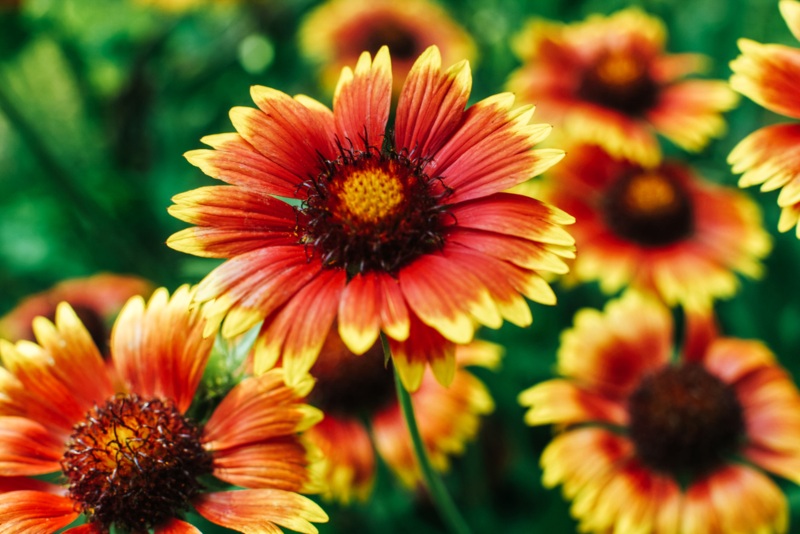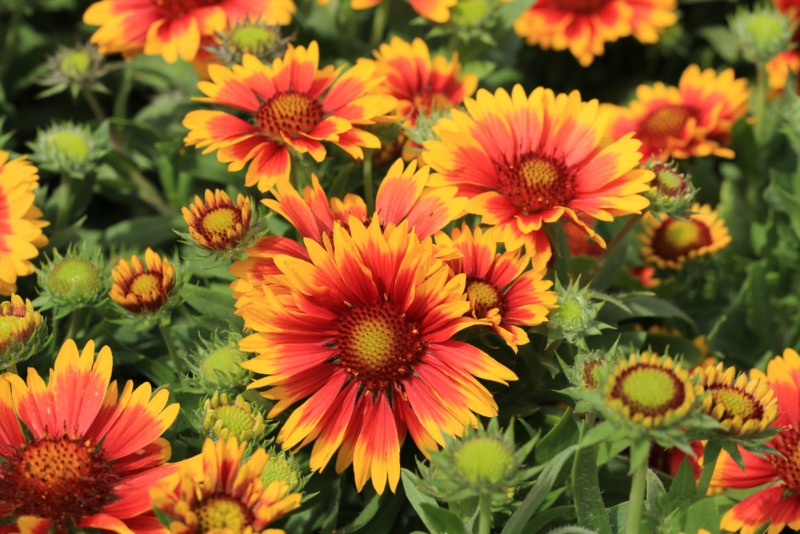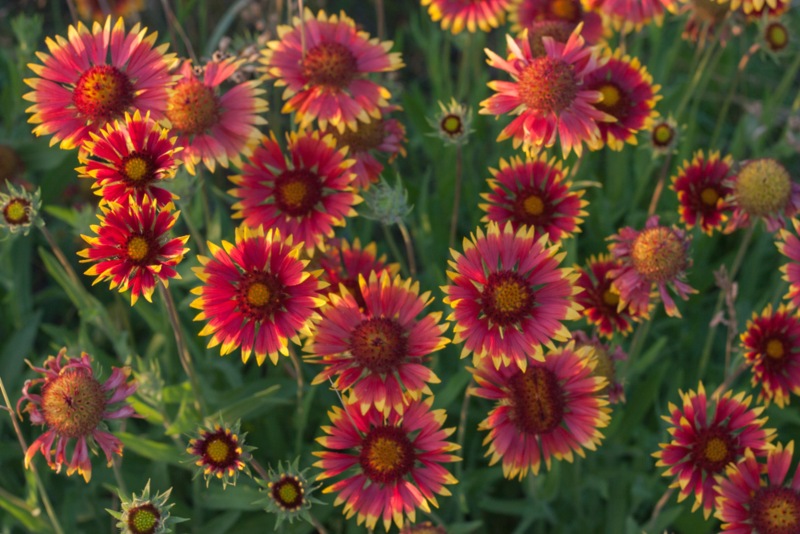
The blanket flower is a colorful flowering plant that is low-maintenance and easy to spread. It’s a herbaceous perennial and a great plant to use for ground cover with its daisy-like blooms and its reseeding.
They can be grown in zones 3 through 10, and they bloom repeatedly in the summer and fall.
The name “blanket flower” may refer to its ability to blanket the area in which it’s planted.
There are more than two dozen types of blanket flowers, and many are hybrid forms.
They are prized for their yellow, red and orange petals as well as for the ease of growing them. They are very hardy and need little care to thrive as long as they are planted under the right conditions. They can grow to be as tall as 24″ and as wide as 20″, growing in a mound.
Light
Plant these flowers in full sunlight for them to thrive. They are tolerant to some partial shade, especially in areas where temperatures get hot in the summer. If they do have some shade, however, they can flop over instead of standing erect, and they may not grow as many flowers.

Water
When you first plant your blanket flower, be sure to water it often while it is becoming established. It may need to be watered about every two days during that time. When the first flowers start to grow, you can be sure that the plant is established, and it won’t have to be watered as often. It is highly tolerant of drought conditions. Unless the conditions are extremely dry and hot, you won’t have to water it. If it gets very hot and dry, it can use one to two waterings each week. Don’t water it more than that- it does not fare well with overwatering and is susceptible to root rot under those conditions. They don’t need a lot of humidity to grow.
Temperature
Blanket flowers are tolerant of a wide range of temperatures, but they do better in hot and dry areas than they do in areas that are moist and cool. They are great for climates with hot summers. If you are growing them from seeds, they need to germinate at about 70 degrees. These plants are not resistant to low temperatures.
Soil
The soil you plant it in should have good drainage- this plant does not like to sit in water. It’s tolerant of some water in the soil, but it can’t withstand a wet soil such as a heavy clay. It isn’t fussy about the pH of the soil. It will grow well in average soil that is anywhere from dry to low-medium moisture. It tolerates poor soils well, and it does well in sandy soils. If the soil is rich, it may cause the plant to be floppy and to bloom with few flowers. If you have a cooler climate, keep the soil warmer by adding 2″ of mulch to it.
Fertilizer
While many plants need rich soils and additional fertilizer to grow well, this plant does not. It actually does better in poor soils, so adding more nutrients to the soil may cause worse results than leaving it alone. This hardy, easy plant doesn’t need to be fertilized at all.

Are Blanket Flowers Toxic?
Blanket flowers aren’t extremely toxic, and they don’t contain oxalate crystals that can cause severe respiratory problems. They are mildly toxic, having some irritants that can cause rashes when your skin comes into contact with them. They should never be ingested under any circumstances. If you come into contact with this plant and you have a painful rash, call your doctor or the Poison Control Center to find out what to do next.
Deadheading and Pruning
While some plants need deadheading in order to thrive and bloom, the blanket flower does not. It is not required that you deadhead this plant that needs so little care. However, if you do deadhead it, you can usually expect more blooms to grow on it, and you can expect the plant itself to be fuller and better-looking. If your plant gets wilty in the summer heat, you can cut it back to give it more energy to grow more flowers in the fall. Cutting the blanket flower back isn’t required to keep it going, but it can help to elongate that bloom time so that it keeps producing its showy flowers in your garden. If you do cut yours back, start to do so when the flowers begin fading.





